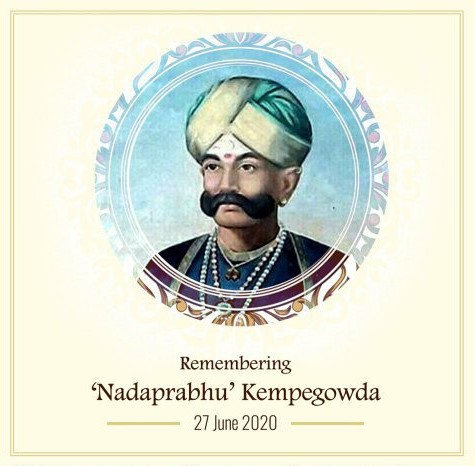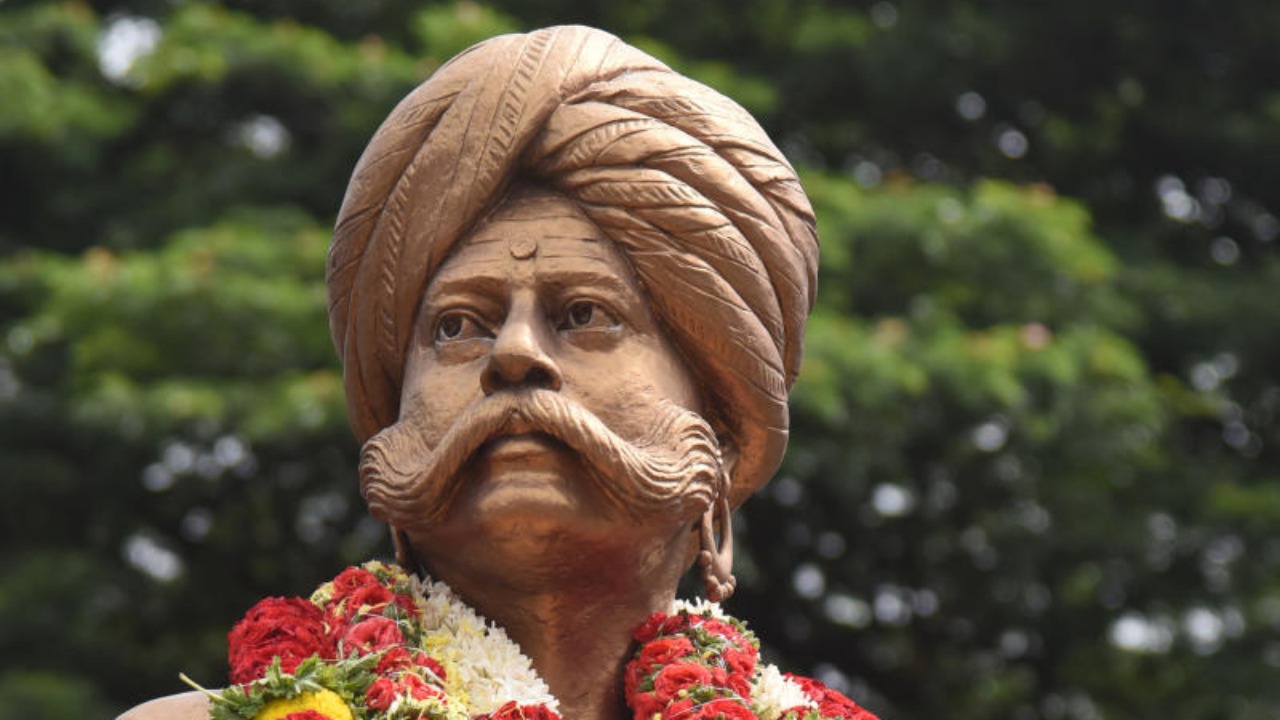The Bengaluru we know, The person we don’t.
Kempegowda, also known as Kempegowda I, was a visionary ruler and feudal lord who played a pivotal role in the foundation and development of Bangalore, the capital city of Karnataka, India. Born in 1510 CE, he left an indelible mark on the region through his administrative prowess, strategic vision, and enduring legacy. This essay will explore the biography of Kempegowda and delve into his relevance and significance in today’s world.

Who was Kempegowda?
Kempegowda hailed from the Yelahanka Nadu, a feudatory under the Vijayanagara Empire. He inherited the chieftainship from his father, Kempananje Gowda, and expanded his territory through alliances and military campaigns. In 1537 CE, he founded the city of Bangalore, marking the beginning of a remarkable era of growth and development.
Under Kempegowda’s leadership, Bangalore witnessed the construction of forts, temples, tanks, and markets, shaping the foundation of the city’s infrastructure. His strategic foresight is exemplified by the four towers, known as Kempegowda Towers, which were erected in different directions, providing reference points for the city’s expansion. These towers symbolize his vision and systematic planning.
Kempegowda’s administration focused on promoting agriculture, trade, and commerce, attracting artisans and craftsmen to settle in Bangalore. The establishment of markets bolstered economic activities, propelling the city towards becoming a thriving commercial center. His emphasis on water management led to the construction of numerous tanks and lakes, ensuring a steady water supply. The Kempambudhi Lake, now known as Kempambudhi Tank, stands as a testament to his commitment to sustainable urban development.

Kempegowda’s significance in Today’s World:
- Urban Planning and Infrastructure Development: Kempegowda’s approach to urban planning, marked by the construction of forts, temples, and marketplaces, offers valuable insights in today’s world. As cities grapple with rapid urbanization and the need for sustainable development, Kempegowda’s focus on well-planned layouts, infrastructure, and water management serves as a relevant model for modern city planners.
- Cultural Heritage and Tourism: Kempegowda’s legacy is deeply intertwined with the cultural heritage of Bangalore. His contributions, including the Bangalore Fort and temples, offer a rich historical and architectural tapestry. Preserving and showcasing these landmarks can enhance tourism, fostering a deeper appreciation for the region’s history and cultural identity.
- Water Resource Management: Water scarcity and sustainable management are pressing concerns globally. Kempegowda’s expertise in creating tanks and lakes for water storage demonstrates an eco-centric approach to water resource management. Today, his principles can inspire initiatives to conserve and harness water resources, ensuring a more sustainable future.
- Entrepreneurship and Trade: Kempegowda’s patronage of artisans, craftsmen, and trade guilds fostered a thriving economic ecosystem. His emphasis on promoting entrepreneurship and commerce resonates with contemporary efforts to support local businesses and stimulate economic growth. Kempegowda’s entrepreneurial spirit serves as a source of inspiration for today’s business leaders and policymakers.
- Civic Pride and Identity: Kempegowda’s legacy instills a sense of civic pride and identity among the people of Bangalore. Celebrating his contributions through statues, institutions, and commemorative events not only honors the past but also strengthens a collective sense of belonging and unity. This connection to history and heritage can contribute to social cohesion and community building.
A Deep Understanding.
The understanding of Kempegowda’s biography and his significance in today’s world provides an opportunity to critically evaluate the enduring relevance of his legacy. While his contributions to urban planning, infrastructure development, water resource management, entrepreneurship, and cultural heritage are commendable, it is essential to consider the challenges and limitations associated with applying his ideas in the modern context.
Firstly, it is crucial to acknowledge that Kempegowda’s accomplishments were contextual to his time and the specific circumstances of Bangalore during the 16th century. The principles he employed in urban planning and infrastructure development were based on the needs and resources available at that period. Today, cities face complex and diverse challenges that require comprehensive approaches and consideration of social, economic, and environmental factors. Simply replicating Kempegowda’s strategies without adaptation may not adequately address the contemporary urban challenges, such as climate change, social inequality, and rapid urbanization.
Furthermore, while Kempegowda’s water resource management techniques were innovative for their time, applying them to current water scarcity issues requires a deeper understanding of hydrological systems and the integration of modern technology and sustainability practices. Urban areas today often face greater water demand, pollution concerns, and ecosystem degradation. Thus, effective water management strategies must incorporate a multidisciplinary approach, considering factors such as rainwater harvesting, wastewater treatment, and water conservation practices.

Additionally, while Kempegowda’s emphasis on entrepreneurship and trade promotion is laudable, it is essential to recognize the complexities of the contemporary global economy. Today’s economic landscape is interconnected and influenced by factors such as globalization, technological advancements, and market dynamics. Supporting local businesses and stimulating economic growth requires a comprehensive understanding of modern economic trends, policies, and practices, including fostering innovation, enhancing access to markets, and promoting sustainable business models.
Moreover, while celebrating Kempegowda’s cultural heritage and preserving historical landmarks are vital for promoting tourism and fostering a sense of pride and identity, it is crucial to ensure that heritage preservation is inclusive, sustainable, and respectful of diverse cultural narratives. Balancing the preservation of historical sites with the evolving needs and aspirations of local communities is a complex task that requires careful planning, stakeholder engagement, and equitable development strategies.
Conclusion
In conclusion, while Kempegowda’s biography and achievements hold relevance and offer valuable insights for today’s world, it is critical to critically evaluate and adapt his ideas and principles to the complexities and challenges of the present time. By taking into account the lessons learned from his visionary leadership, and combining them with contemporary knowledge, technology, and sustainable practices, we can strive to build inclusive, resilient, and prosperous cities that honor the past while embracing the future.



